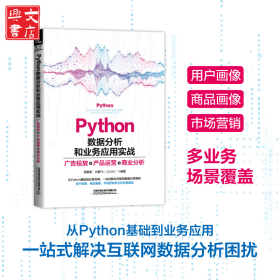
量子力学
正版保障 假一赔十 可开发票
¥ 120.96 7.8折 ¥ 155 全新
库存4件
作者(意)Gennaro Auletta(G.奥利特)
出版社世界图书出版公司
ISBN9787510078620
出版时间2014-09
装帧平装
开本16开
定价155元
货号23643890
上书时间2024-10-31
- 最新上架
商品详情
- 品相描述:全新
- 商品描述
-
导语摘要
内容介绍
本书是一部运用现代观点描述量子理论的巧妙的图书。书中量子纠缠和测量过程的讨论十分巧妙和具有闪光点。为了能够充分学习书中的知识,具有初步量子力学的知识将更有益。书中的叙述强劲,超过300多道问题和证明,可以带领学生通过实验、概述到现代应用。高年级本科生和研究生将从这本书中受益匪浅。
目次:(量子力学的基本特点)从经典力学到量子力学;量子观察和态;量子动力学;量子动力学案例;密度矩阵;(更高等话题)角动量和自旋;全同粒子;对称和守恒定律;量子力学中的测量问题;(物质和光)扰动和逼近方法;氢原子和氦原子;氢分子离子;量子光学;(量子信息:态和相关)开放系统的量子理论;量子力学中的态测量;纠缠,不可分离性;纠缠,量子信息和计算。
读者对象:物理、量子力学专业的学生、老师和相关科研人员。
作者简介作者介绍
Gennaro Auletta(G.奥利特,意大利)是国际知名学者,在数学和物理学界享有盛誉。本书凝聚了作者多年科研和教学成果,适用于科研工作者、高校教师和研究生。
目录
List of figures
List of tables
List of definitions, principles, etc.
List of boxes
List of symbols
List of abbreviations
Introduction
Part I Basic features of quantum mechanics
1 From classical mechanics to quantum mechanics
1.1 Review of the foundations of classical mechanics
1.2 An interferometry experiment and its consequences
1.3 State as vector
1.4 Quantum probability
1.5 The historical need of a new mechanics
Summary
Problems
Further reading
2 Quantum observables and states
2.1 Basic features of quantum observables
2.2 Wave function and basic observables
2.3 Uncertainty relation
2.4 Quantum algebra and quantum logic
Summary
Problems
Further reading
3 Quantum dynamics
3.1 The Schr'6dinger equation
3.2 Properties of the Schrodinger equation
3.3 Schrodinger equation and Galilei transformations
3.4 One-dimensional free particle in a box
3.5 Unitary transformations
3.6 Different pictures
3.7 Time derivatives and the Ehrenfest theorem
3.8 Energy-time uncertainty relation
3.9 Towards a time operator
Summary
Problems
Further reading
4 Examples of quantum dynamics
4.1 Finite potential wells
4.2 Potential barrier
4.3 Tunneling
4.4 Harmonic oscillator
4.5 Quantum particles in simple fields
Summary
Problems
5 Density matrix
5.1 Basic formalism
5.2 Expectation values and measurement outcomes
5.3 Time evolution and density matrix
5.4 Statistical properties of quantum mechanics
5.5 Compound systems
5.6 Pure- and mixed-state representation
Summary
Problems
Further reading
Part II More advanced topics
6 Angular momentum and spin
6.1 Orbital angular momentum
6.2 Special examples
6.3 Spin
6.4 Composition of angular momenta and total angular momentum
6.5 Angular momentum and angle
Summary
Problems
Further reading
7 Identical particles
7.1 Statistics and quantum mechanics
7.2 Wave function and symmetry
7.3 Spin and statistics
7.4 Exchange interaction
7.5 Two recent applications
Summary
Problems
Further reading
8 Symmetries and conservation laws
8.1 Quantum transformations and symmetries
8.2 Continuous symmetries
8.3 Discrete symmetries
8.4 A brief introduction to group theory
Summary
Problems
Further reading
9 The measurement problem in quantum mechanics
9.1 Statement of the problem
9.2 A brief history of the problem
9.3 Schr'odinger cats
9.4 Decoherence
9.5 Reversibility/irreversihility
9.6 Interaction-free measurement
9.7 Delayed-choice experiments
9.8 Quantum Zeno effect
9.9 Conditional measurements or postselection
9.10 Positive operator valued measure
9.11 Quantum non-demolition measurements
9.12 Decision and estimation theory
Summary
Problems
Further reading
Part III Matter and light
10 Perturbations and approximation methods
10.1 Stationary perturbation theory
10.2 Time-dependent perturbation theory
10.3 Adiabatic theorem
10.4 The variational method
10.5 Classical limit
10.6 Semiclassical limit and WKB approximation
10.7 Scattering theory
10.8 Path integrals
Summary
Problems
Further reading
11 Hydrogen and helium atoms
11.1 Introduction
11.2 Quantum theory of the hydrogen atom
11.3 Atom and magnetic field
11.4 Relativistic corrections
11.5 Helium atom
11.6 Many-electron effects
Summary
Problems
Further reading
12 Hydrogen molecular ion
12.1 The molecular problem
12.2 Born-Oppenheimer approximation
12.3 Vibrational and rotational degrees of freedom
12.4 The Morse potential
12.5 Chemical bonds and further approximations
Summary
Problems
Further reading
13 Quantum optics
13.1 Quantization of the electromagnetic field
13.2 Thermodynamic equilibrium of the radiation field
13.3 Phase-number uncertainty relation
13.4 Special states of the electromagnetic field
13.5 Quasi-probability distributions
13.6 Quantum-optical coherence
13.7 Atom-field interaction
13.8 Geometric phase
13.9 The Casimir effect
Summary
Problems
Further reading
Part IV Quantum information: state and correlations
14 Quantum theory of open systems
14.1 General considerations
14.2 The master equation
14.3 A formal generalization
14.4 Quantum jumps and quantum trajectories
14.5 Quantum optics and Schrodinger cats
Summary
Problems
Further reading
15 State measurement in quantum mechanics
15.1 Protective measurement of the state
15.2 Quantum cloning and unitarity violation
15.3 Measurement and reversibility
15.4 Quantum state reconstruction
15.5 The nature of quantum states
Summary
Problems
Further reading
16 Entanglement: non-separability
16.1 EPR
16.2 Bohm's version of the EPR state
16.3 HV theories
16.4 Bell's contribution
16.5 Experimental tests
16.6 Bell inequalities with homodyne detection
16.7 Bell theorem without inequalities
16.8 What is quantum non-locality?
16.9 Further developments about inequalities
16.10 Conclusion
Summary
Problems
Further reading
17 Entanglement: quantum information and computation
17.1 Information and entropy
17.2 Entanglement and information
17.3 Measurement and information
17.4 Qubits
17.5 Teleportation
17.6 Quantum cryptography
17.7 Elements of quantum computation
17.8 Quantum algorithms and error correction
Summary
Problems
Further reading
Bibliography
Author index
Subject index
内容摘要内容介绍
本书是一部运用现代观点描述量子理论的巧妙的图书。书中量子纠缠和测量过程的讨论十分巧妙和具有闪光点。为了能够充分学习书中的知识,具有初步量子力学的知识将更有益。书中的叙述强劲,超过300多道问题和证明,可以带领学生通过实验、概述到现代应用。高年级本科生和研究生将从这本书中受益匪浅。
目次:(量子力学的基本特点)从经典力学到量子力学;量子观察和态;量子动力学;量子动力学案例;密度矩阵;(更高等话题)角动量和自旋;全同粒子;对称和守恒定律;量子力学中的测量问题;(物质和光)扰动和逼近方法;氢原子和氦原子;氢分子离子;量子光学;(量子信息:态和相关)开放系统的量子理论;量子力学中的态测量;纠缠,不可分离性;纠缠,量子信息和计算。
读者对象:物理、量子力学专业的学生、老师和相关科研人员。
主编推荐作者介绍
Gennaro Auletta(G.奥利特,意大利)是国际知名学者,在数学和物理学界享有盛誉。本书凝聚了作者多年科研和教学成果,适用于科研工作者、高校教师和研究生。
相关推荐
— 没有更多了 —






















以下为对购买帮助不大的评价